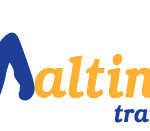When it comes to protecting your business and your staff, it’s more important than ever to understand and meet your health and safety requirements. We had the opportunity to chat with expert Finbarr Stapleton from SQT Training about the practicalities, legalities involved and why investing in this area could save you money.
Hello Finbarr, and thanks for chatting with us here at Nightcourses.com. Can you tell me a little bit about the programmes that you deliver?
Our courses range from a NEBOSH Diploma through to the NEBOSH Cert. They’re both internationally accredited health and safety courses, whereby people can demonstrate confidence in relation to health and safety issues. We also deliver shorter courses, such as the five-day IRCA approved ISO 45001 Health and Safety Lead Auditor programme. This would be delivered to people who are managing health and safety auditing within their organisation as required by ISO 45001, the health and safety management system standard.
We also do courses that cover not just health and safety but also the environment and quality control from an auditor point of view. We do a two-day internal health and safety auditor course as well as a range of specialist training. We address a whole range of issues such as manual handling, VDU, chemicals, working in a confined space, or working at heights. We do courses on health and safety representatives as required by the Safety Health and Welfare at Work Act, 2005. These run from professional 15 – 20 day courses right through to half day, or one-day courses.
The half-day courses would be typical of bringing managers in a particular company up to Health and Safety standards. In which case, we might do a two hour, or three-hour presentation for executives.
What industries do you usually work with and what sort of training do they need?
We have every industry you can imagine; utilities, the public sector, gas networks (such as ESB) right through to the private industry. This might be medical device companies like Medtronic or Boston Scientific right through to chemicals and pharmaceuticals like Pfizer. Also, we cover service companies and consulting/engineering firms. We have done a lot of training with the local authority sector too.
From a training point of view, we are happy to create customised courses to reflect their requirements. Typically, we would liaise with the company well in advance of the training delivery. In fact, we have 25 years of experience designing programmes to fit. The only issue is when the course is accredited you have to stick to the syllabus as it’s laid down by the accredited organisation. Even then, we take a lot of time including the company’s health and safety documentation to make it far more relevant and applicable to the business and its delegates.
What are some of the horror stories you’ve heard over the years?
We don’t show pictures of people with their hands falling off or people getting incinerated in a fire. On our training, we try to emphasise the preventative side of health and safety. We don’t go for scaremongering and graphic details! We sometimes show pictures of scenarios where, say, for example, someone is cleaning a window and they have a ladder on top of the chair. They are precariously perched on top of that chair. Those examples are funny rather than graphic.
What about a horror story from a business point of view, where someone sues you for a fortune?
One of the courses we teach is a legislation course. It’s a one-day overview of health and safety legislation. People are amazed at some of the settlements that are made, in that they are so huge and so variable. Because of the vagaries of the legal system, sometimes a case gets thrown out, or sometimes they get a huge settlement. This is acknowledged within the insurance industry. Some of the payments that are made to people for injuries are hugely expensive for the companies.
What would be some common health and safety mistakes that companies tend to make?
There’s a myriad of examples. People, for example, mightn’t realise that when you’re going into a confined space, into a cellar or into a little enclosure, there is a whole methodology and procedure that you should be following. There have been terrible stories of people who have gone into reactor vessels without observing proper precautions. They die as a result; they become asphyxiated because the atmosphere in the vessel is different from what they were expecting.
There are people working at heights without the proper controls in place, going out onto roofs without proper training, supervision or fall arrest equipment. There are people working with highly hazardous chemicals who don’t understand their properties they don’t understand how to handle them properly or what personal protective equipment is appropriate. People are working in construction sites not realising that they have been exposed to biological agents which could ultimately kill them. In fact, there are fatalities every year due to Weil’s disease, which you get from rats. Sometimes, it’s a very innocuous thing that happens which results in a fatality. Sometimes it is a systemic fault in the part of the company.
How important is it if you’re self-employed or a small business to train yourself up in Health and Safety?
It would be very rare nowadays to go into a large multinational and see someone hanging off the roof. However, if you drive around, you see small contractors up on roofs with no controls because:
1. they mightn’t understand what controls should be in place, and
2. they probably don’t have the wherewithal or the funding to actually bring the controls in. They might not have their own health and safety people, while larger companies would typically have safety advisors to give them direction on how to behave.
Quite often, for small companies, this is not the case. Now, I know that they have the HSA. The Health and Safety Authority has a lot of good material on their website. However that requires people to look it up, to access it and interpret it, and quite often a small company that’s under huge pressure to deliver, doesn’t have the time to do that.
Just say if you had four employees and one of them fell because of controls that you didn’t put in place? How much would you be liable for?
Say somebody is injured and it’s a serious enough injury to require notification to the HSA; who would come in and conduct an investigation. If the investigation shows that you didn’t have the proper controls in place, in terms of carrying out a risk assessment, having a documented procedure, and have people trained etc., potentially the company would be liable for criminal prosecution by the HSA or the Gardaí. You might be liable for a civil action by the injured party or their next-of-kin that could come quite close to bankrupting your company. There are incidents of this having happened.
So investing in health and safety could mean you save money in the long run?
Yes, you are saving money but you’re also protecting people that you have a duty of care towards.
With regards to the service industry, what are the common areas that employers don’t know they are responsible for?
You’ve hit it on the head there. The assumption is that if you’re in an office environment or service company, you don’t have any health and safety issues. To be honest, they’re not as severe as working in a pharmaceutical company or manufacturing environment, but there are issues that can crop up. You can have faulty equipment or you can have trips and falls. One of the big issues is companies not having proper evacuation plans in the event of a fire – and if they do, then not practising them. Now, fortunately, that comes up very rarely. However, people quite regularly trip over wires or leads. Workers are parked in front of a screen for eight hours a day and if it’s not properly risk assessed they might have posture issues. The risks are not as severe as other environments but there are hazards nonetheless and they need to be looked at.
Ireland as a nation seems to be getting more litigious. Have you seen the results of that in your own experience?
Oh, we have. We do a lot of work with companies of all sizes. Even small companies nowadays are increasingly aware of the need for health and safety training. From a moral and from a legal perspective you need to make sure that you are fully compliant with a very large raft of legislation. You have the Safety, Health and Welfare at Work Act 2005 and the Safety, Health and Welfare at Work Act general application regulations – they cover virtually every activity that any company, be it a service or manufacturing, would be engaged in.
Business owners are becoming more aware; they see stories in the papers about very large fines being imposed. They hear about companies which were prosecuted by the HSA. Because remember, the HSA also carries out inspections. If they find something that is of concern to them, they have different sanctions that they can impose. This includes insisting that a company improves a scenario, right down to closing the company down in the extremist of situations.
It wouldn’t be unusual to get a fine of €50,000 or €100,000 by the HSA in the event of an accident not involving a fatality. The big concern in Ireland at the moment is that we get a piece of legislation similar to the Corporate Manslaughter Act in the UK, which came in 2007. This means executives can now be prosecuted on criminal charges if, by an act of omission or/ and act of commission, they result in someone getting seriously injured in the company. We don’t have that legislation in place but it’s probable that it will come in at some point. That would mean that, not only would the companies be charged but potentially, directors or senior managers can be fined or indeed imprisoned if necessary.
That’s a lot of responsibility!
It’s a huge responsibility… but we also have to make sure that the advice we’re giving is best practice too. There’s a huge amount of responsibility on the people who are advising these companies, and their internal health and safety people as well.
For the smaller companies, if there is one piece of advice you would give to them, what would it be?
Do a risk assessment. It’s your absolute priority. Conduct a risk assessment of all the activities within your company and identify the higher risk ones then put controls in place. The second thing would be to get competent advice, either someone in-house or go to a range of people, including the HSA for that matter.
Our programmes were created to prevent these things from happening, whether they cover auditor training or health and safety representative training or competent person training. They’re all designed to ensure any company that once they take these people on, they have a much better chance of avoiding accidents in the future.
Contact SQT training now and chat with them about health and safety training to suit your needs.
About Finbarr
Finbarr Stapleton has a B.Sc in Industrial Chemistry and is a chartered chemist. He has extensive experience in risk assessment and health & safety legislation and is a qualified Risk Assessor (IOSH/Institute of Risk Management) as well as a qualified Dangerous Goods Safety Advisor. He has been involved in safety design and training in a wide range of organisations and regularly carries out energy-related projects on behalf of the Sustainable Energy Authority of Ireland (SEAI). Delivering environmental and technical consultancy services for client companies including IPPC licence applications is part of his role. Finbarr is the Senior Consultant with the Commission for Railway ISO 9001 implementation project which Antaris are working on at present.












